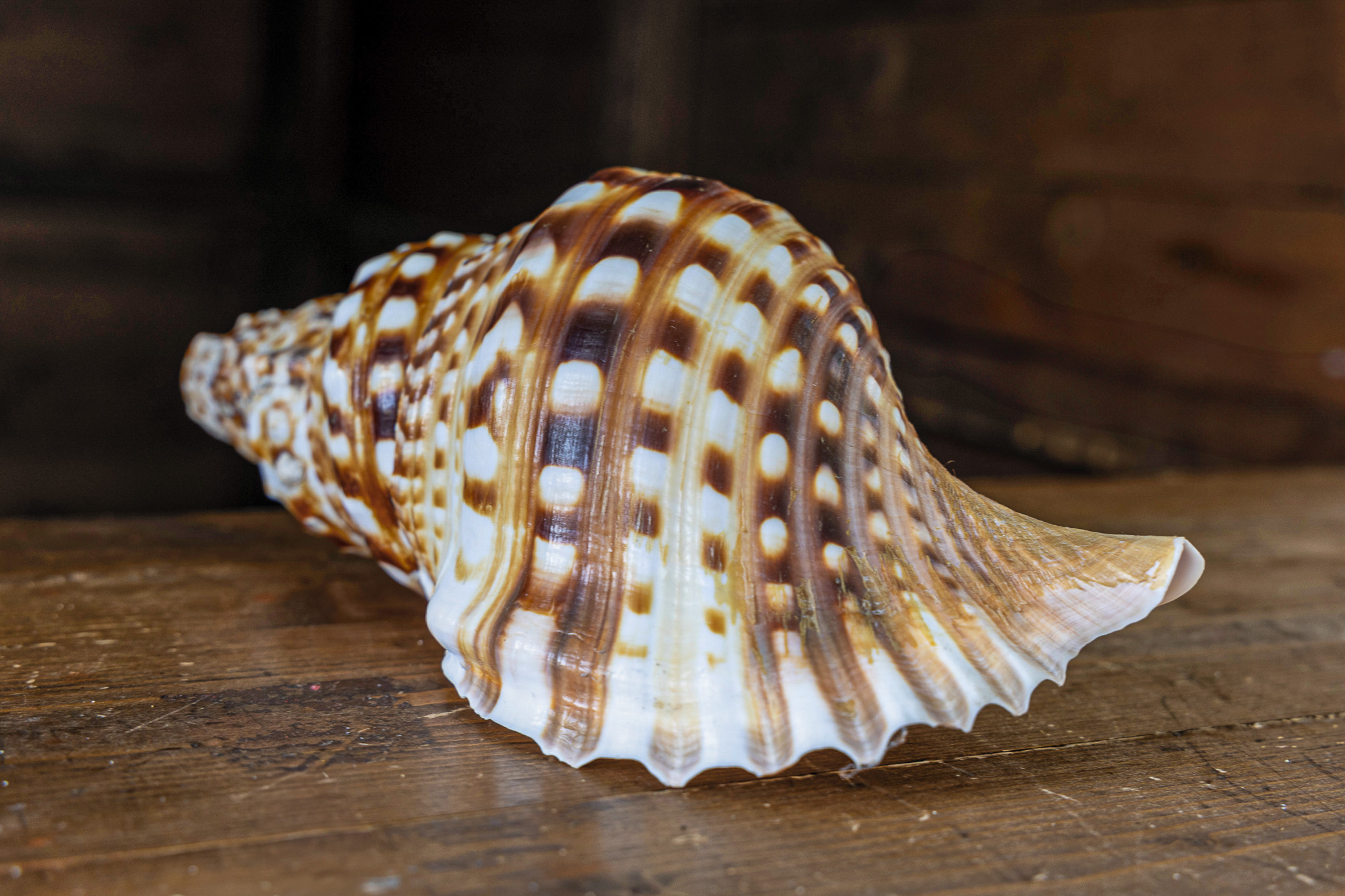When you put it to your ear, you can hear the sea breathing. The god Triton always carried it with him, playing it to calm the stormy sea and to announce the arrival of his father Poseidon, the god of the sea. The large shell was precious to every sailor, who used it to launch his call to signal the position of the vessel in the fog or to announce the arrival in port. That unmistakable sound also resounded in the countryside, to call the flocks and accompany the special moments of the communities. For millennia, the sea trumpet has been a tool for communication, alarm and even defense against attacks by enemy ships approaching the coast. All possible thanks to a shell, the largest in the Mediterranean after the noble pen shell and among the largest in the world, with a tapered conical shape and bright colors, from white to brown, under the marine encrustations. Inside, an enormous mollusc of about sixty centimetres, which bears the name of the half-man, half-fish god: Giant Triton, Charonia tritonis for science.
For tens of millions of years on the planet, fossils testify to its presence in all seas as other molluscs of the same Charoniidae family, with very similar characteristics that sometimes make them difficult to distinguish. It lives in the oceans and in the Mediterranean, from the east to the Adriatic, to the Sicilian Sea up to the central Tyrrhenian Sea, at a depth between twenty and forty meters. And it prefers rocky or detritus seabeds. Where it finds in abundance the invertebrates on which it feeds such as starfish, sea cucumbers and bivalves.
It mostly devours them whole, even when they are large, and digests them, even the hard parts, thanks to acid secretions produced by the salivary glands. The giant triton is also able to produce saliva that can paralyze its prey, in order to feed on it.
This also allows it to eat the large crown-of-thorns starfish (Acanthaster planci), which live in the Pacific and Indian oceans. Although their rays are covered with spines for protection, they are useless against the giant triton, their only predator. As such, it is considered essential for the defense of the coral reef, which in turn is prey to the crown-of-thorns starfish, which can feed on corals, thanks to powerful digestive enzymes. It is estimated that a single starfish can destroy six square meters of reef a year and the proliferation of crown-of-thorns is seriously endangering corals in various parts of the planet.
For its part, the giant triton has become quite rare in the Mediterranean, where sightings are very few. The population of the mollusc has been drastically decimated by the intensive fishing to which it has been subjected even in recent times both because it is edible and to use its precious shell, no longer as a foghorn or musical instrument, but for collecting purposes.
The giant triton is a species protected by the Bern and Barcelona Conventions, so fishing is prohibited.




